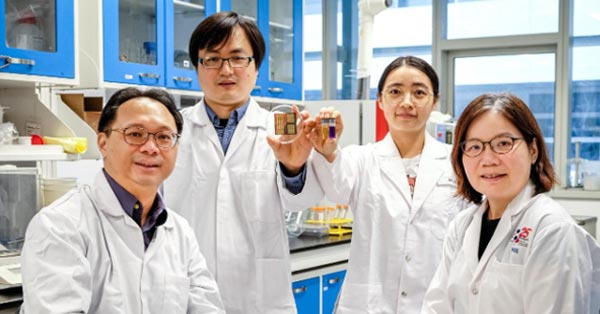Research led by scientists from Nanyang Technological University, Singapore (NTU Singapore) announced the findings of using non-toxic metals with a new approach to fabricate the capping layer of perovskite solar cells, making the cells more environmentally friendly while maintaining high conversion efficiency.
Since the first perovskite-based solar cell was published in 2009scientists have strived to discover new materials and manufacturing techniques to improve the efficiency and stability of perovskite cells.
Another cause that hinders commercialization is the environmental impact of the toxic elements in the cells. Perovskites can decompose when they react with moisture and oxygen, are exposed to light and heat, or when used for extended periods of time. When the cell is damaged or discarded, the toxic heavy metal from the perovskite material and the cap layer (coated on the perovskite layer to protect the cell from environmental stress and to improve its performance) can threaten the environment.

When the traditional half-precursor (HP) method is used, it is necessary to draw up lead ions from the underlying perovskite layer to form the protective cap layer. However, the FP method allows the chemicals in the composite solution to react with each other directly on the surface of the perovskite layer, which is more effective.


Using the FP method, the scientists created a prototype 1-inch by 1-inch perovskite cell capped with the zinc-based compound. After examining with electron microscopy and spectroscopy, they found that the zinc-based capping layer did not affect the electrical properties of the underlying perovskite layer, while it helped to cover defects on the surface of the perovskite layer and improve its light-collecting capabilities. In experiments with simulated sunlight, the prototype cell was able to convert 24.1% of light into electricity, close to the highest record achieved by perovskite solar cells to date.
The scientists also say that the new method contributes to efforts to make the perovskite layer more environmentally friendly, stable and efficient, as it does not require extracting lead ions from the perovskite layer to make the traditional lead-based capping layer, opening up new possibilities opens up the use of other materials to reshape both the perovskite and capping layers, thereby optimizing overall cell performance.
The Institute of Materials Research and Engineering (IMRE) of the Agency for Science, Technology and Research (A*STAR) in Singapore also participated in the study.
Details of the study can be found in Nature Energy in February 2023. The scientists are working on scaling up the method to manufacture full-size cells.


